American colonialism. Spanish-American War and the Battle of Santiago
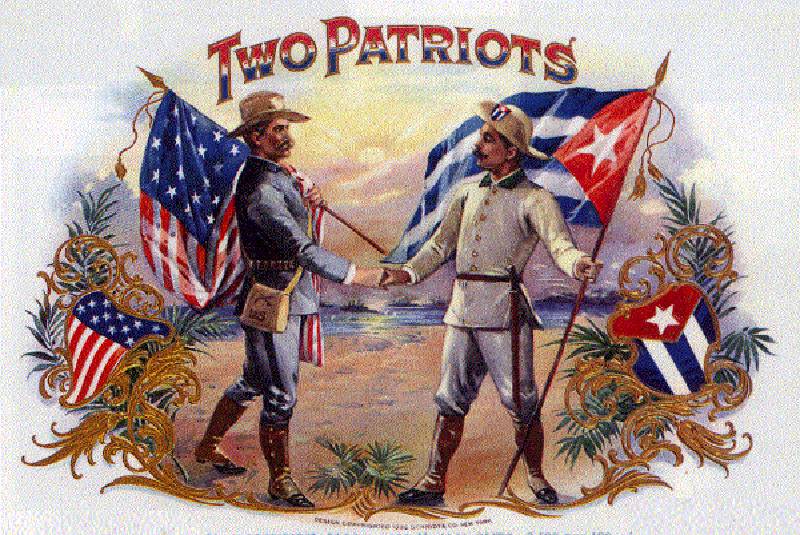
In 21 hour 40 minutes 15 February 1898, a powerful explosion broke the measured life of the Havana raid. Anchored American armored cruiser "Men", whose hull broke at the nose tower, quickly sank, taking with it the lives of 260 people. Cuba at that time was the Spanish governor-general, and relations between Spain and the United States could be called explosive without exaggeration. The measures taken by the Spanish authorities were efficient and operational: the injured crew members were provided with necessary medical care and placed in the hospital. The first witness of the incident was interviewed by the relevant authorities within an hour. Eyewitnesses emphasized the selfless actions of the crew of the Spanish cruiser Alfonso XII in helping the Americans. The news of the sad event was urgently telegraphed. And here in the United States in the offices of various newspapers began to occur similar information "detonation" and "explosions." Masters of perfected feathers, artisans of the mighty workshop of Her Majesty Press gave a powerful and, most importantly, friendly volley at the perpetrators of the tragedy, whose fault was already set by default. Spain remembered a lot, because as a little, which was not mentioned, by this time it was already teeth on edge. “Colonial tyranny is strangling the Cubans!” Shouted newsmen yelled. “We are at our side!” - honoring the finger, the venerable congressmen added. "Just over a hundred miles," reputable businessmen practically clarified. America was already an amazing country, where the professions of a businessman and a congressman were intricately intertwined. And very soon the symbiosis of politics and business led to a predictable result - to war.
The colonizers of the new time
The once immense Spanish Empire, spread out on four continents, by the end of the 19th century was only a modest shadow of ancient, indestructible greatness. Longing for forever lost strength, showing the bottom of the treasury, a series of successive political crises and turmoil. Long lost a place in the highest league of world powers, Spain has become a regular viewer of global political processes. Only the Philippines, the islands of Cuba, Puerto Rico and Guam, not counting the smaller islands and archipelagoes in the Pacific and the Caribbean, remained on the map from the former colonial luxury of lonely overseas fragments.
Most of the Spanish colonies farewell to their metropolis in the first half of the XIX century. The remaining forces tried to follow the example of those who had left earlier. The progressively weakness of the metropolis in all respects was naturally projected onto its overseas territories. The colonies were dominated by the decline and domination of the administration, which was engaged in improving their own well-being without special modesty. And at the degrading center, the margins quickly find themselves on the fault line. The Philippines raged, but Cuba provoked particular anxiety, and even then among the most shrewd ones.
February 24 An armed uprising broke out in the eastern regions of this island, aimed at achieving independence. The number of insurgents began to grow rapidly, and within a few months their number exceeded 1895 by a thousand people. Initially, the fighting in Cuba did not cause a big stir in the United States, but gradually the interest in what was happening increased. This is not due to the sudden sympathy and Samaritan kindness towards the local rebels, but the reason is far more trivial - money.
After the end of the Civil War, the country did not please, in spite of some too pessimistic forecasts, the stagnation in the swamp, but, on the contrary, it began to flourish. The last proud representatives of the Aborigines were herded into reservations so that they would not be confused by the energetic and dexterous white settlers. Correct protectionist laws contributed to a surge in industrial production. And now the strong “country of opportunities” has begun to look for new opportunities for itself already beyond its own borders. In Cuba, began to invest money and quite a lot. In 1890, the American Sugar Trust was established, owning most of the sugar cane production on the island. Subsequently, the Americans took control of the tobacco trade and export of iron ore under actual control. Spain turned out to be a poor business executive - the income from the colonies steadily declined. It was based on profits from taxes, customs duties and an ever-decreasing share in trade. Taxes and duties steadily increased, the appetites of the corrupt colonial administration grew, and soon all this “gilded antiquity” at the side began to interfere with the fast-moving American business.
Initially, appeals to seize the old Spanish colonies sounded from the most militant democratic editions, but soon, as this convenient and anticipating hunting and mining of thought evolved, this idea became popular in closely intertwined business and political circles. Ships laden weapons for the rebels, at first they were delayed by the Americans, but later they began to look at them over their fingers. The scale of the uprising made us think - in the fall of 1895, eastern Cuba was already cleared of government troops, and in the following year, 1896, an anti-Spanish armed intervention began in the Philippines. The policy of the United States is changing: having felt the benefits of the situation, they quickly changed the mask of a simple contemplator of what is happening to the image of a good defender of the oppressed islanders. No doubt, the colonial regime of the Spaniards was undermined by worms and was wicked in its essence. The Americans wanted to change it to a more sophisticated, wrapped in a shiny wrapper of bitter slogans about the “struggle for freedom”.
Spain was far from in good shape to reinforce its objections to the issue of interference in the internal affairs of its colonies with something more substantial than sophisticated diplomatic maneuvers. For the defense of this small (compared to the old days), but wide-spread economy, there was no longer enough strength or money. The Spanish fleet mirrored all the processes taking place in the country, and was by no means in the best shape. However, there was an opinion that this very form of “Armada Espanola” irretrievably lost in the era of the Invincible Armada. By the start of hostilities, Spain had three armadillos: Pelayo, Numansia and Vitoria. Of these, only the “Pelayo” built in 1887 was a classic battleship, the other two were obsolete frigates of the late 1860s. and did not pose a serious threat. In the ranks fleet there were 5 armored cruisers, of which the newest Cristobal Colon (the ship purchased in Italy belonging to the Giuseppe Garibaldi type) looked the most modern. However, the “Colon” war found in Toulon, where he was preparing to install new guns of the main caliber, since the Spaniards did not arrange the 254-mm guns of Armstrong. As happens in such cases, the old guns were dismantled, and the new ones were not yet installed. And the Cristobal Colon went to war without his main caliber. Light cruisers were represented by 7 armored cruisers of the 1st rank, 9 cruisers of the 2nd and 3rd ranks, most of them obsolete, 5 gunboats, 8 destroyers and some armed steamers. The fleet did not receive sufficient funding, exercises and training firing were rare, the training of personnel left much to be desired. The ruling regent in the country, Maria Cristina of Austria, under the young king Alfonso XIII, had menacingly gaping holes in the economy that required resources and attention, and the armed forces were clearly not paramount.
Overgrown with industrial and financial muscles of the United States were in a different situation. As the United States embarked on a new period of its stories - to colonial expansion, - then the fleet needed a corresponding fleet to resolve such geopolitical issues. By the beginning of the war, the main ship group in the Atlantic was the squadron of the North Atlantic Ocean. Its composition was as follows: 2 battleship (another battleship, Oregon, made the transition from San Francisco and arrived at the theater of war in May 1898 of the year), 4 naval monitor, 5 armored cruisers, 8 gunboats, 1 armed yacht, XNUM destroyers and more 9 armed steamers and auxiliary vessels. Rear Admiral William Sampson, who held his flag on the armored cruiser "New York", commanded the compound. The squadron was based at Key West.
To protect against possible actions by the Spanish raiders (as further events showed, imaginary), the Northern Guard Squadron was formed from one armored cruiser, 4 auxiliary cruisers and one armored rammer, the usefulness of which in pursuit of high-speed raiders was doubtful. To prevent crises and sudden dangerous moments, Commander Winfield Scott Shlei's Flying Squadron was also formed from 2 armadillos, 1 armored cruisers, 3 cruisers and one armed yacht.
At first glance, the situation in the land sphere of confrontation was not in favor of the Americans. Their armed forces did not exceed the number of thousands of 26 people, whereas only Cuban had 22 thousands of Spanish soldiers and almost 60 thousands of armed irregular formations. The peacetime Spanish army numbered over 100 thousand people and could be brought to 350 – 400 thousand in the event of mobilization. However, in the upcoming war, the one who controlled sea communications could have won the victory (by the way, this approach was expressed in Alfred Mahan’s recent book, The Influence of Sea Power on History), which had already gained popularity.
Compromise - the path to war
The incident with "Maine" caused the effect of pouring a bucket of gasoline on the glowing embers. American society was already carefully prepared with the correct accents placed in the information processing thereof. Another 11 January 1898, the maritime ministry sent out a circular ordering to delay the demobilization of the lower ranks, whose service life was coming to an end. Two cruisers being built in England for Argentina were urgently bought out and prepared for the immediate passage across the Atlantic. On the morning of January 24, the Spanish ambassador to Washington was simply confronted with the fact that President William McKinley ordered to send the “Maine” cruiser to Cuba to protect US interests with a mocking wording: “to witness the success of the Spanish pacification policy in Cuba”. The next day, “Maine” anchored in the roads of Havana. Marshal Ramon Blanco, the governor-general of Cuba, made an official protest about finding "Maine" in the roads of Havana, but the US administration did not respond to such a trifle. While the American cruiser "defended and testified," his officers drew up a careful plan of coastal fortifications and batteries of Havana. Spain’s shy protests paid no attention.
6 in February a group of caring publics, in particular 174 businessman, having direct interests in Cuba, turned to McKinley with a petition demanding to intervene in the events on the island and protect American interests there. McKinley - the president, who is considered in many respects along with Theodore Roosevelt to be the founder of American imperialism - was already not averse to war. And here February 15 so successfully exploded "Man." The American commission sent to Cuba launched an accelerated investigation, the essence of which was to conclude that the ship was killed by an underwater mine. It was not tactfully indicated who installed the mine, but in the situation of growing military hysteria it did not matter anymore.
February 27, the US naval ministry strengthened the fleet’s combat readiness, and on March 9, the congress unanimously decided to allocate an additional 50 million to strengthen national defense. Began arming coastal batteries, the construction of new fortifications. Hastily armed steamships and auxiliary cruisers. Then began a diplomatic spectacle organized by the United States, aimed at forcing Spain to strike first. March 20 The American government demanded that the Spaniards make peace with the rebels no later than April 15.
Seeing that the situation is taking a serious turn, Madrid asked the European powers and the Pope to bring the case to international arbitration. At the same time, it was agreed to conclude a truce with the rebels, if they so request. 3 April, the Spanish government agreed to the mediation of the Pope, but demanded the withdrawal of the American fleet from Key West after the armistice. Of course, the Americans refused. In addition, McKinley assured Europe that his country sincerely seeks peace, the only obstacle to which is these insidious and evil Spaniards. Madrid made unprecedented concessions, saying it was ready to conclude a truce with the rebels immediately. Such a compromise situation did not suit Washington at all, and he put forward new, even more radical demands. April 19 Congress decided on the need to intervene in the affairs of Cuba, and the next day the Spanish ambassador was simply handed an ultimatum: Madrid had to give up its rights to Cuba and withdraw its troops from the island. The demands were already beyond the limits, and they were expectedly rejected - Spain broke off diplomatic relations. Under the joyful and stormy applause, the villain was finally found. 22 April, the American fleet began to "civilize" block Cuba. April 25 began the Spanish-American war.
Trekking Squadron Admiral Servers
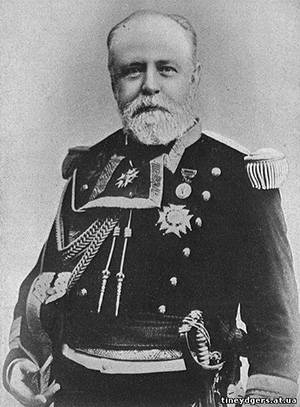
Some steps to the military, the Spanish government began to take even before the outbreak of hostilities. 8 April 1898 from Cadiz to the island of São Vicente (Cape Verde Islands) came a detachment of Spanish cruisers: "Infanta Maria Theresa" under the flag of Rear Admiral Pascual Servers and in fact deprived of artillery of the main caliber of the newest "Cristobal Colon". On April 19, two more Spanish cruisers arrived at San Vicente: Vizcaya and Almirante Oquendo. 29 On April, the squadron, which included the 4 above the armored cruisers listed above and the 3 destroyer, which were being towed to save coal, left the station and headed west. Thus began the naval expedition, the final of which largely determined the time and results of the war.
Preparation for the implementation of the Atlantic transition was made from the very bad hands. The ships were not in the best technical condition, their teams did not have the experience of long hikes, and as for shooting, the situation was striving for a bare theory. The reason was prosaic - lack of funds. Even before the outbreak of hostilities, Server required allocations for the purchase of 50 thousand tons of coal and 10 thousand shells for practical shooting. He received a sacramental response from the maritime ministry: "No money." The admiral himself opposed the campaign with such forces, proposing that most of the Spanish fleet should be concentrated on the Canary Islands in order to launch with large forces.
The squadron, being on an island belonging to Portugal, intensively exchanged telegrams with Madrid, but in the capital they were inexorable and demanded actions. From Servers demanded to protect Cuba and not to allow the landing of the American troops. How it was possible to make such modest and, most importantly, unprepared forces, was not specified. Perhaps the staff admirals were seriously hoping that the faded gold of the Spanish banner would mercilessly cast American commanders, or that the enemy sailors would rush to the boats at the first shots. One way or another, but the hike began. Spanish forces in the Caribbean were very modest. In Havana, there was an Alfonso XII cruiser, three gunboats, armed vehicles and several smaller ships with uncorrected vehicles. An old light cruiser, two gunboats and a messenger ship were based in San Juan in Puerto Rico.
The campaign took place in difficult conditions. The detachment was carrying the destroyers in tow and therefore was limited in speed. The Americans were alarmed by the movement of the Servers and took a series of measures. It was clear that the Spaniards did not have enough coal to act against the Atlantic proper, and yet there they were seriously preparing to repel the attacks of the Spanish raiders. At the beginning of the war, a lot of resources were spent to ensure coastal defense - subsequently these costly measures proved unjustified. Perhaps, if the Spanish admiral had more freedom of action and initiative, he could be based in San Juan, from where he could cause the Americans much more trouble and harm.
12 May 1898, a squadron of Servers reached French Martinique already with highly depleted coal bunkers. When asked to allow coal for Spanish ships to be purchased, the French governor-general refused. Then Server moved to the Dutch Curacao. One of the destroyers, the Terror, was left in Martinique due to a breakdown in the engine room. The Dutch acted in the same way as their French counterparts: the Spaniards received only a small amount of fuel of rather poor quality. In addition, Admiral caught up with the news that on May 12, the American squadron of Admiral Sampson appeared in San Juan’s mind and bombed this port, firing about a thousand shells. Forts and coastal batteries suffered little, after which Sampson returned to Havana. Of course, the press in the United States inflated the incident to the unprecedented extent of victory. The news of the appearance of the enemy at San Juan and the acute shortage of coal influenced the decision of the Servers to go not to Puerto Rico, but to the nearest Spanish-controlled Cuban port of Santiago.
In many ways, this determined the fate of the squadron. In the morning of May 19, the Spanish squadron, unnoticed by the enemy, entered Santiago. The port was not adapted for the basing of such a large compound; there were no more than 1898 tons of coal in its coal depots. The Americans soon learned from their agents that the Servers in Santiago were so much awaited by them, and the blocking forces, primarily the Shlei Flying Squadron, began to press there. The Spanish ships were not in the best condition, their machines and mechanisms needed to be repaired. In the port there were no devices for loading coal, and therefore it had to be taken aboard a la carte with the help of boats, which utterly delayed the loading.
The Governor-General of Cuba, Marshal Blanco, on the one hand, understood that Santiago was not well suited for basing the connections of the Servers, and on the other, he wanted to strengthen the defense of Havana. How useful the Spanish governors would be in the governor-general’s capital is a moot point, but telegrams were sent to the admiral, and soon there were demands for a breakthrough to Havana. The server, supported by the commanders of their ships, resisted the onslaught of the governor, arguing his actions by the low combat capability of the forces entrusted to him and the order of subordination - Blanco was not his direct commander. The insistent marshal turned for support to Madrid.
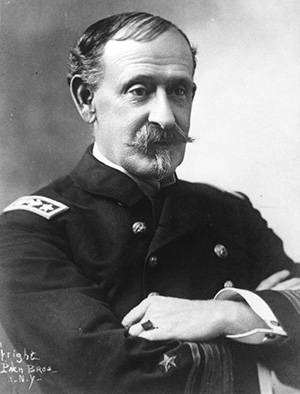
While intense telegraph battles were going on, Shlei appeared at Santiago. 31 May he fired on coastal batteries without any serious result. 1 Jun approached Sampson, who had battleships Oregon and New York, and took overall command. June 3 Americans tried to block the fairway of Santiago by flooding a coal miner with the resounding name "Merrimak", but this victim was in vain - the coal miner sank not across, but along the fairway.
Meanwhile, in the United States, preparations for a landing operation were under way. The case was complicated by the fact that the Americans did not have experience in such large-scale enterprises. The transport fleet was formed at Tampa (Florida) - it had to transport an expeditionary corps of 13 thousands of regular troops and 3 thousands of volunteers under the command of Major General Shafter, including Theodor Roosevelt 1 volunteer cavalry regiment. Initially, the landing was to take place in the area of Havana, however, at the urgent request of Sampson, she was redirected to Santiago. Even blocked in the bay, the squadron Servers represented, in the opinion of the Americans, a serious threat. The Spanish port was not to be taken from the sea, the bombing was useless - therefore a radical solution was required.
On June 20, the ships of the American convoy anchored in a bay west of Santiago, and a full-scale landing began on June 22 near the village of Siboney. The Spaniards did not repair any serious obstacles. By the evening of June 24, most of the American Expeditionary Force was landed on the shore. It should be noted that Santiago was not prepared for defense from the land - the ancient fortifications, remembering the times of 17th century corsairs and filibusters, were supplemented by dug earthy redoubts. Some of the guns that were there were of antiquarian rather than military value. And most importantly, the Spanish command did not bother to create any significant food reserves in the city.
Despite the fact that the American offensive was developing rather slowly and messy, the Spaniards rated their chances to hold Santiago extremely low. 2 July 1898 of the Server has already received a categorical order from Madrid for an immediate breakthrough to Havana. There was nowhere to go, and the Spanish admiral began to prepare for the march. The personnel was recalled from the shore to the ships. A breakthrough was scheduled for July 3 morning.
Fight at Santiago
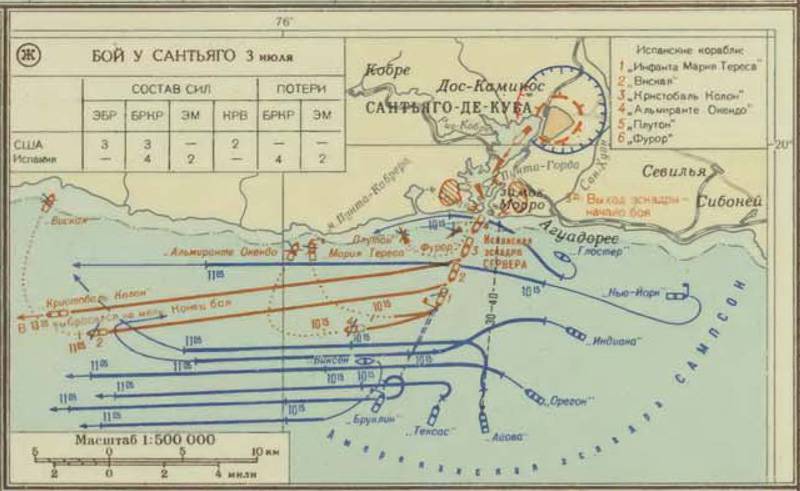
The moment for going to sea was chosen quite successfully. The battleship "Massachusetts", light cruisers "New Orleans" and "Newark" went for the replenishment of coal reserves. The commander of the blocking squadron Sampson left on his flagship, the armored cruiser "New York", to negotiate with the command of the Spanish rebels. In the morning of July 3 1898, who took command of Commodore Shlei, deployed the armored cruiser Brooklyn, the battleships of the 1 class Iowa, Indiana and Oregon, the battleship of the 2 class Texas and the auxiliary cruiser Gloucester and "Vixen." The advantage in the salvo was undoubtedly left for the Americans, but the Spanish ships were more fast - only the "Brooklyn" could be compared with them in speed.
In 9 hours 30 minutes of the morning at the exit of the bay appeared Spanish squadron. The flagship of the Infanta Maria Teresa was heading, followed by the Vizcaya, Cristobal Colon and Almirante Oquendo in the wake column. At a short distance from them moved the destroyers "Pluto" and "Furor". In this battle, Cristobal Colon could only count on his auxiliary caliber artillery: ten 152-mm and six 120-mm guns. After leaving the bay, the Spanish squadron took off in full swing and headed for the flagship Brooklyn, which Server considered the most dangerous adversary for itself because of its speed. Therefore, it was decided to attack his first.
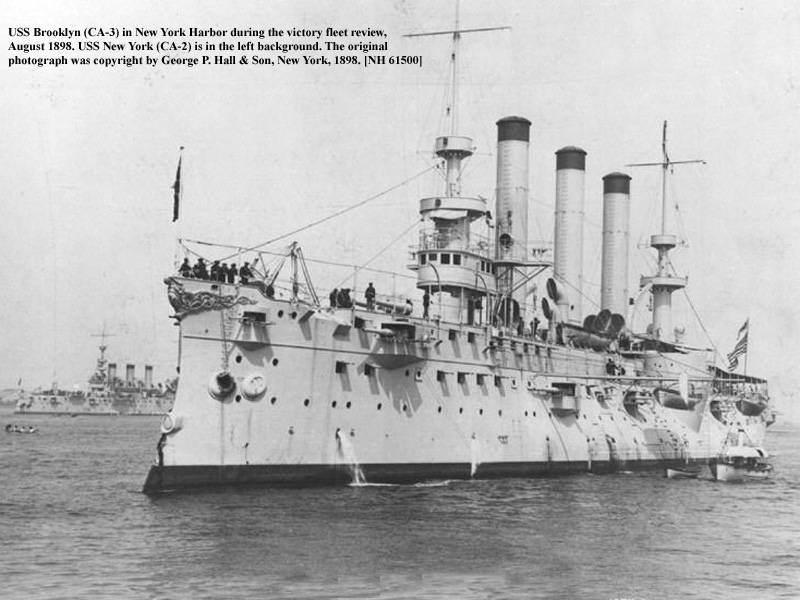
Noticing the Spaniards, the Americans raised the signals "the enemy comes out" and moved towards. Sampson's instructions provided the commanders of the ships a great initiative. The battleships “Iowa”, “Oregon”, “Indiana” and “Texas” turned left, trying to cross the course of the Spanish squadron, but their speed was clearly not sufficient, and they lay on a parallel course. Having exchanged the first volleys with Brooklyn, Server changed course and moved along the coast to the west. Subsequently, the Spanish admiral was criticized for the lack of perseverance in firing contact with Brooklyn. Obviously, the presence of battleships with their 330 – 305-mm artillery did not allow, in the opinion of the Spanish admiral, to mess around with the American cruiser for a long time.
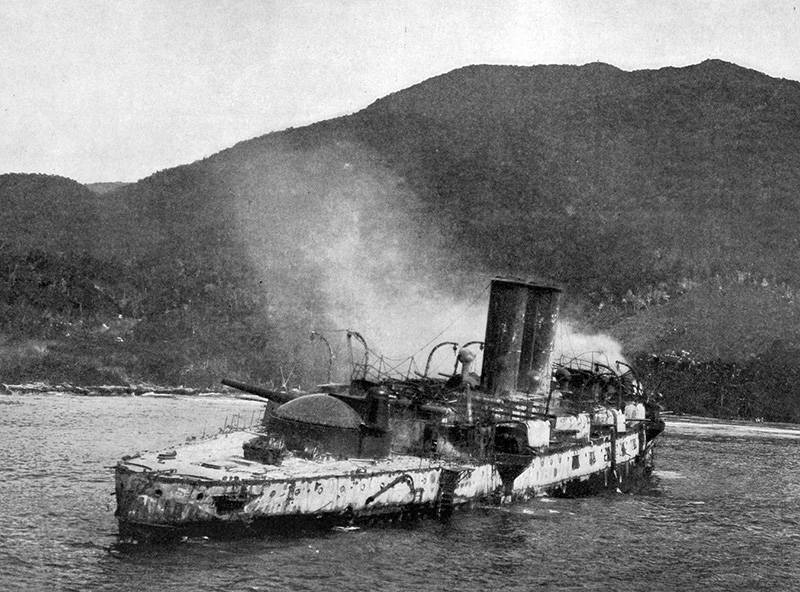
The long-range battle turned into a chase, where the Spaniards continued to move in a wake and the Americans did not observe any order. Soon the Infanta Maria Theresa began to receive hits, and a fire broke out on it. As luck would have it, the fire line turned out to be broken by shrapnel, and it became very difficult to extinguish the fire on a ship that was widely used to build a tree. The commander of the ship was injured, and Server took command of the cruiser to himself. The fire spread, and it could not be taken under control - the admiral decided to throw the Infanta Maria Theresa ashore. Having left the system to the left, diverting the fire to himself and letting through all his ships, Server sent the cruiser to the shore. By this moment, the end cruiser Almirante Oquendo, having received a number of damages, also caught fire and soon followed the lead of the flagship, throwing itself onto the shore around 10 hours. Destroyers who came under fire from Indiana and Iowa were soon damaged, and the auxiliary cruisers Gloucester and Vixen completed the massacre. In 10 hours 10 minutes "Furor" sank, and badly damaged "Pluto" rushed to the shore.
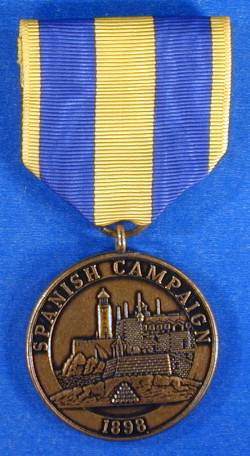
"Cristobal Colon" and "Vizcaya", meanwhile, at full speed went to the west. They were pursued by forward-breaking Brooklyn and the battleship Oregon, whose vehicles were in excellent condition. Soon "Cristobal Colon" left "Vizcaya" far behind him, leaving her alone with superior forces. Hits multiplied in 10.45, enveloped in flames, Vizcaya rushed ashore in 20 miles from the entrance to Santiago Bay. The pursuit of the newest cruiser squadron Servers was longer, but the Americans achieved their goal. The poor quality of coal, the fatigue of the stokers and the poor condition of the machines made the Colon slow down, which the enemy immediately took advantage of. About one o'clock in the afternoon, the cruiser was in the fire zone from the Oregon, whose first salvo of the 330-mm main caliber immediately gave a covering. The demoralized Spaniards turned ashore, lowered the flag and cast their ship ashore 50 miles from Santiago. Subsequently, American newspapers argued that before the surrender of the Spanish officers carefully packed their bags - as far as true, it is difficult to judge.
The battle ended in a convincing victory for the American fleet. It is curious that in the midst of the battle, the Austro-Hungarian cruiser Kaiserin und Koenigen Maria Theresia approached Santiago to observe what was happening. Inflamed by the battle, the Yankees almost attacked the Austrians, taking him for another Spanish cruiser, and he had to call the orchestra to the deck in order to immediately play the American anthem.
The Spaniards lost about 400 people killed and 150 wounded and burned. About 1800 people were captured, including Admiral Server. The losses of the Americans were insignificant and amounted to several killed and wounded. “Brooklyn” received 25 hits, “Iowa” - nine, without causing serious damage. Subsequently, the Americans inspected the wrecks of burnt and sunken Spanish cruisers (the surrendered “Cristobal Colon” was torn off the rocks and sank) and counted 163 hits. Considering that the 138 guns, which Americans had, were made about 7 thousand shots, as a result, it gave 2,3% of successful hits, which gives reason to consider the artillery training of American gunners insufficient.
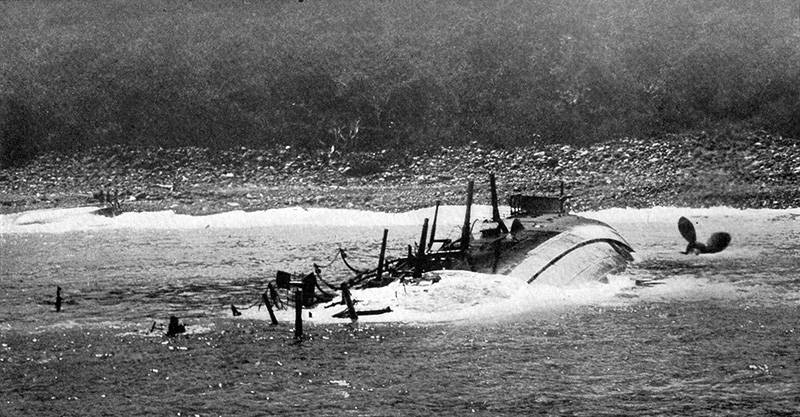
Liberty Island
The battle of Santiago had a great influence on the position of Spain. The colonial squadron in Manila Bay was destroyed a month before the events described, 20 June capitulated to the island of Guam. New American troops landed in Cuba and the Philippines. 20 August was a truce between Spain and the United States, and in December 1898, the Peace of Paris was signed. Spain refused the rights to Cuba, gave the Philippines and Puerto Rico to the Americans, and for 20 millions of dollars was inferior to Guam.
Cuba, getting rid of the colonial rule of Spain, fell under complete dependence on the United States. The right to enter the island was specified in the American Constitution and was abolished only in 1934 year. Virtually all sectors of the Cuban economy were controlled uncontrollably by American companies, and Havana became a leisure center for the non-poor in the United States. The road to getting rid of the tutelage of the “top managers” and their local managers was a long and difficult one. It ended in January 1959, when the Sherman column, covered with smiling bearded men, entered the hailing Havana.
Information